Interesting facts about puerto rico: 34 Fun and Interesting Facts About Puerto Rico You Probably Didn’t Know
34 Fun and Interesting Facts About Puerto Rico You Probably Didn’t Know
1.5K
shares
With loads of stunning beaches and year-round sunshine, Puerto Rico is a small Caribbean island that draws visitors from far and wide.
But once you look beyond the idyllic tropical setting, you’ll uncover all kinds of surprising and fascinating facts that range from historical moments to quirky details and natural wonders.
Here are 34 fun and interesting facts about Puerto Rico that you might not know.
But first…
Where is Puerto Rico?
Puerto Rico is located in the northeastern Caribbean Sea. It is roughly 70 miles 112) east of the Dominican Republic, and 40 miles (64 km) west of the British and the US Virgin Islands.
Even though Puerto Rico has only 5,515 square miles (9,104 sq km), it is home to roughly 3.2 million people, while its capital city of San Juan is home to almost 400,000 people.
To put it in comparison, Puerto Rico is roughly the size of Connecticut. Still, in terms of population, it has the third-highest density in the US, just after Washington DC and New Jersey.
But, different from those states, the year-round temperatures in Puerto Rico vary between 70 and 80 degrees Fahrenheit. Tropical weather!
Now, let’s take a look at those fun and interesting facts about Puerto Rico:
1. Puerto Rico is not a Country, but Behaves like a Country
Puerto Rico has a strong cultural identity, which is why many people around the world, including in the US, think that Puerto Rico is a country.
But it is not. Puerto Rico is a commonwealth governed by the United States and is therefore not a sovereign state.
For example, the US dollar is the currency used in Puerto Rico, but locals call it a “peso” or “dolar.”
Also, Puerto Rico still competes as an “independent nation” in the Olympics and Miss Universe, as well as in many other international events.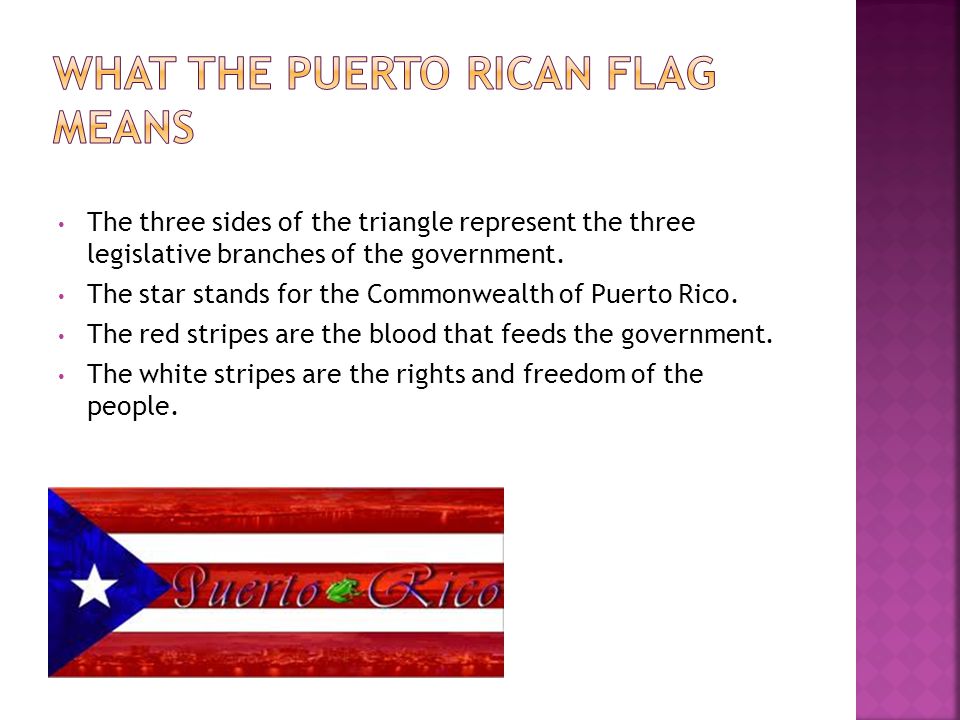
Regarding Miss Universe, Puerto Rico has won the title five times!
And of course, there’s the delicious food that is different from everything else in the US! You must try the Mofongo, which is the unofficial cuisine staple, and the national dish, Arroz con Gandules.
You can taste the Flavors of Old San Juan on this highly recommended tour.
2. Puerto Ricans are US Citizens
The United States gained (or invaded) Puerto Rico during the Spanish-American War in 1898.
Under the Treaty of Paris (1898), Spain ceded Puerto Rico, Guam, and the Philippines to the US.
Still, it wasn’t until the Jones-Shafroth Act of 1917 that Puerto Rico officially became a territory of the United States, granting Puerto Ricans US citizenship.
Still…
3. Puerto Ricans can’t Vote in the U.S Presidential Elections
Even though Puerto Rico is a US territory, they can’t vote for the President or Vice President of the United States unless they have moved permanently to a U.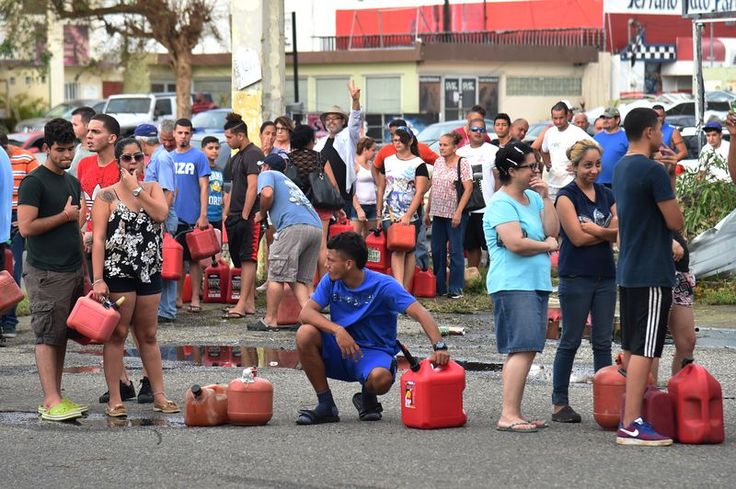 S state. Voting for the president is limited to the 50 states.
S state. Voting for the president is limited to the 50 states.
Also, Puerto Rico does not have a vote in the U.S. Congress.
4. There is a Puerto Rican Citizenship too
Yes, Puerto Ricans can have two citizenships, even though they are citizens of one country. This is due to Puerto Rico’s commonwealth status, where it is neither a state nor an independent country. It is in a weird political and territorial limbo.
In 1997, the Supreme Court of Puerto Rico, through its ruling in Miriam J. Ramirez de Ferrer v. Juan Mari Brás, reaffirmed the standing existence of the Puerto Rican citizenship.
On October 25, 2006, Puerto Rican Socialist Party president Juan Mari Brás became the first person to receive Puerto Rican citizenship.
Since then, the government has granted Puerto Rican citizenship to anyone born in Puerto Rico and to people who have at least one parent who was born in Puerto Rico.
Also applicable are those who have lived at least one year in Puerto Rico and are an American citizen.
5. US Citizens Don’t Need a Passport to Visit
Given that it is a US territory, US citizens don’t need a passport to visit Puerto Rico. All other citizens need to apply for a visa or ESTA just as if visiting any other US state.
For Americans, it’s just one less thing to think about when planning a trip to Puerto Rico!
6. Puerto Rico is Considered the World’s Oldest Colony
Puerto Rico has been a colony since Christopher Columbus “discovered” the island during his second voyage to the New World in 1493. (Using quotes on discovered since the tribe of Taíno Indians already inhabited the island.)
It is interesting to note that Columbus wasn’t enamored with the island. He spent a total of two days here, claimed it as a colony of Spain, and never returned.
Then, during the Spanish-American War in 1898, Spain lost its claim to Puerto Rico, thus becoming a U.S. territory and keeping its colonial status.
To this day, Puerto Rico is the world’s oldest colony, and San Juan is the oldest European city under the American flag.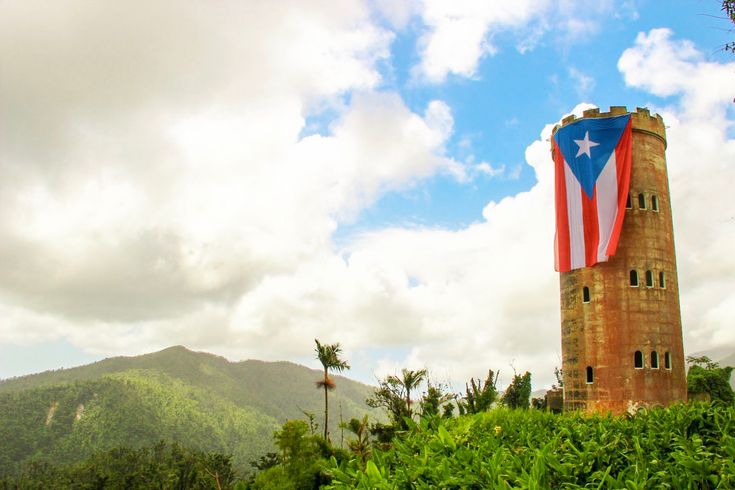
7. The Island Has Changed its Name Several Times
Before Christopher Columbus set foot on the island, the local Taíno Indians called it Borikén, which means “Land of the Valiant and Noble Lord” in the Taino language. The name also referred to the Great Spirit or Creator.
In 1493, Columbus named the island San Juan Bautista after St. John the Baptist.
Given the value of the gold and all the riches being taken out of the island and exported to Spain in the early 1500s, the Spanish named the first city on the island, Ciudad de Puerto Rico, which means “Rich Port City” – given that the main port was there.
In the coming years, traders and other maritime visitors began to refer to the entire island as Puerto Rico since the gold could be found in many of its rivers and streams.
By 1521, the island changed its name to Puerto Rico while the capital city and main trading/shipping port took the name of San Juan.
The island’s name was changed to the anglicized Porto Rico after the United States acquired the island under the Treaty of Paris of 1898.
Then in 1931, the name was changed back to Puerto Rico by a joint resolution in Congress introduced by Félix Córdova Dávila.
And lastly, in 1952, its official name was changed to Estado Libre Asociado de Puerto Rico (“free associated state of Puerto Rico”), while its official English name is Commonwealth of Puerto Rico.
While not an official name, you’ll hear Puerto Ricans call Puerto Rico as Borinquén – a derivation of Borikén. This is why Puerto Ricans are also known as Boricuas!
8. Two of the Oldest Churches in the Americas are in Old San Juan
Old San Juan counts with the second oldest church in the Americas – Iglesia de San José (Church of San Jose), built in 1922.
While San José is the second oldest church structure in existence in the Americas, it is the oldest church in the Americas still in use, and a great example of Spanish Gothic architecture.
Just steps away from San José is its most famous counterpart, the Catedral de San Juan (San Juan Cathedral), which serves as Puerto Rico’s most important religious landmark.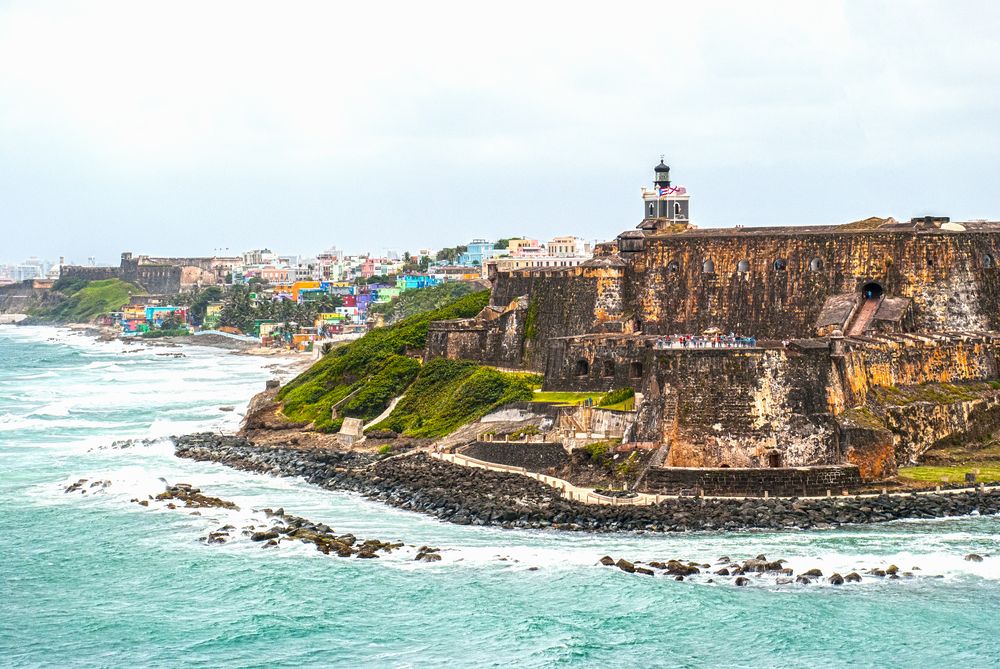
Initially constructed from wood in 1521 -just a year before San José- the original structure fell victim to two hurricanes, lootings, and attacks, prompting the reconstruction of the current structure in 1540.
The cathedral structure has had several redesign interventions, with the latest being in 1917.
San Juan Cathedral also has a few surprising secrets not many know about…
9. Juan Ponce de Leon’s Tomb is in San Juan
The Catedral de San Juan has an interesting tour, which includes the remains of Ponce de León.
The remains were originally at the Iglesia de San José but were relocated to the cathedral in 1908. There you’ll see a wax-covered, glass-encased mummy of a saint.
Juan Ponce de Leon is remembered for being one of the first explorers of the New World.
He discovered Florida and claimed it for Spain while searching for the Fountain of Youth – which is said to restore youth and vitality to those who drink its waters.
He led an expedition to Puerto Rico in 1508, where he discovered gold. Thanks to this discovery, he became one of the richest men in the New World.
Subsequently, the King of Spain made him the first Governor of Puerto Rico.
10. San Juan was Not the First Capital City
Juan Ponce de León established the first European settlement on the island in 1508, on what is known as Caparra – roughly 4 miles (6.4 km) south of Old San Juan.
Back then, Spanish settlers called Caparra, the island’s first capital, La Ciudad de Puerto Rico (the city of Puerto Rico). However, Ponce de León’s grand ambitions for the settlement collapsed due to the capital’s vulnerability to Taino Indian attacks.
Caparra was abandoned between 1519 and 1521, and the capital was moved to what is now Old San Juan.
Still, you can see the ruins of Ponce de León’s house in Caparra (located in Guaynabo county) as well as the small Museum of the Conquest and Colonization of Puerto Rico.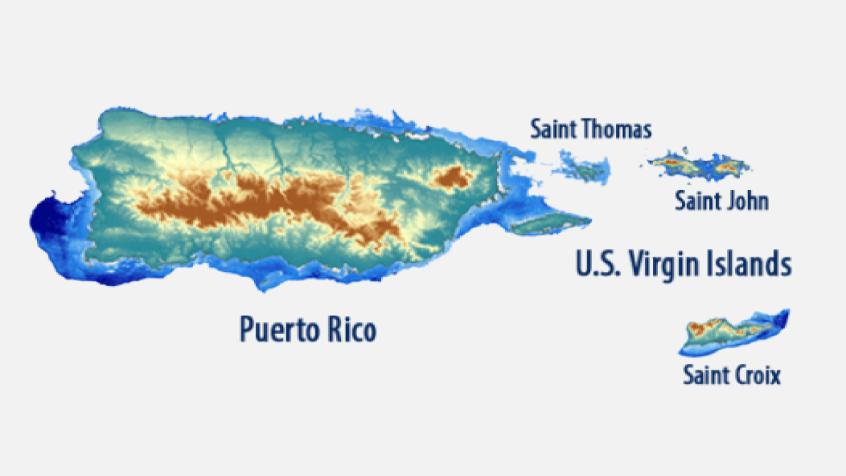
11. Puerto Rico was the Headquarters of the Spanish Inquisition
The Catholic Church played an essential role in the history and development of Puerto Rico since the early 1500s.
In 1519, Pope Leo X declared Puerto Rico the first ecclesiastical headquarters in the New World, thus turning Puerto Rico into the general headquarters of the Spanish Inquisition – one of the most infamous and barbaric events done by the Catholic Church.
12. The Oldest Executive Mansion in Continuous Use in the Americas
San Juan is the second oldest European-established capital city in the Americas, and just like every other capital city, it has its own executive mansion to house the island’s governor – known as La Fortaleza.
To this day, it is the oldest executive mansion in continuous use in the Americas.
Also known as Castillo Santa Catalina, La Fortaleza is a small mansion hidden at the end of Fortaleza Street in Old San Juan.
It is famous for its baby blue and white mix of Classical Revival architecture and Spanish Colonial castle.
You can tour La Fortaleza for free with a previous reservation.
13. The Streets of Old San Juan were Paved with Blue Cobblestones
Being the main port in Puerto Rico, San Juan served as the funnel from where all the riches were exported to Spain.
While ships navigated from Puerto Rico to Spain heavy and full of wealth, they often returned to the island mostly empty – thus very unstable in high winds.
But, that changed in the 1700s when Spain started using cobblestones as ballast on their ships coming from Europe. Such cobblestones were used to pave the streets of Old San Juan, beginning in 1784.
You’ll notice, though, that these aren’t typical cobblestones; they are grey-ish blue. These cobblestones were made using iron slag, the waste from smelting iron.
Most of the blue cobblestone streets have been replaced, but you can still see originals on Calle Del Cristo and a few others.
14. The US Almost Purchased Puerto Rico
In 1890, following the suggestion of William H. Seward, the former Secretary of State under presidents Abraham Lincoln and Andrew Johnson, the US planned to purchase Puerto Rico and Cuba for a sum of $160 million. However, Spain rejected the offer.
Little did Spain know that it would lose Puerto Rico, Guam, and the Philippines to the US during the Spanish-American War just eight years later and receive only $20 million, according to the Treaty of Paris.
15. Puerto Rico has the Second Largest Single-dish Radio Telescope in the World.
UPDATE: Well, had… Unfortunately, the observatory fell into disrepair, and the main telescope collapsed on December 1st, 2020. There’s a movement to restore it. We’ll see…
For over 50 years, from its completion in 1963 until July 2016, the Arecibo Observatory’s 1,000 feet (305 meters) radio telescope was the world’s largest single-aperture telescope as well as the most sensitive.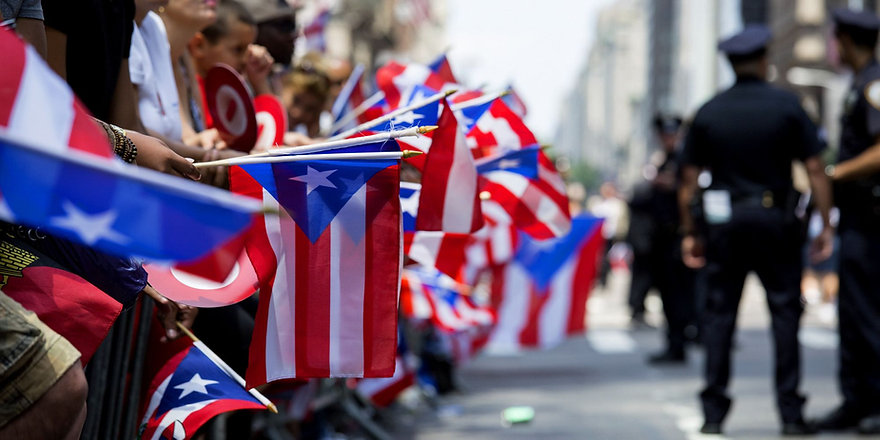
It was displaced to its current second place when China’s 1,640 feet (500 meters) Aperture Spherical Telescope was completed in 2016. Still, the Arecibo Observatory is so big that the single dish was designed nestled between the mountains of Arecibo.
This scientific hub and technological marvel is used in three major areas of research: atmospheric science, radio astronomy, and radar astronomy. In other words, it helps monitor asteroids in space to determine if any comes too close to Earth.
While no longer the largest in the world (and it is still being debated whether it will be repaired or dismantled), it has a place in pop culture after being featured in several films like Contact and Goldeneye.
Even though the radiotelescope is currently not operational, the visitor center is still open. You can learn more about it and book tickets on their webpage.
16. The First Nuclear Submarine Voyage Arrived in San Juan, Puerto Rico
On January 21, 1954, the USS Nautilus, the world’s first nuclear submarine, slid off a dry dock at General Dynamics in Groton, Connecticut, officially launching the United States Navy into the nuclear era.
After a year of rigorous testing, in May 1955, the Nautilus embarked on its nuclear-powered maiden Naval voyage, traveling from New London, Connecticut, to San Juan, Puerto Rico.
Completely submerged for the entire journey, it established the record for the longest time underwater, the longest single submarine trip in history, and the highest sustained speed. These records have been broken since then.
The Nautilus is now a National Historic Landmark and museum in Groton.
Speaking of nuclear energy…
17. Puerto Rico has the First Nuclear Power Plant in the Caribbean
Located in Rincon, the Boiling Nuclear Superheater (BONUS) Reactor Facility, also known as “Domes,” is the first Nuclear Power Plant in the Caribbean.
It served as a nuclear testing facility from 1960 (when it was built) until 1968 – when it was decommissioned. BONUS is considered as the precursor to modern nuclear facilities we still see in use these days.
Today it is the BONUS Technological Museum run by the local power authority.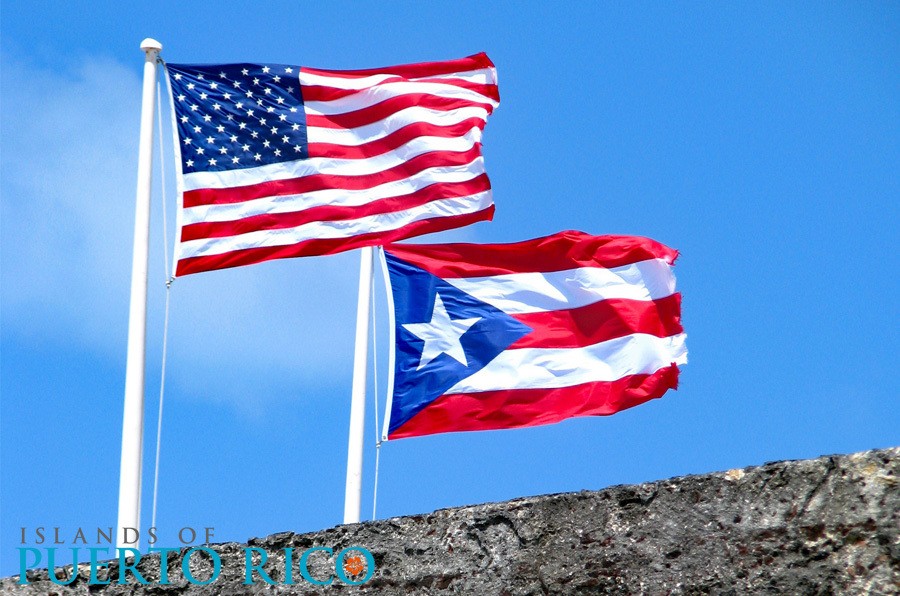 Don’t worry; it is safe to visit! There is no more radiation, and the reactor is entombed in concrete, but visiting it is a hit and miss as the museum opens sporadically.
Don’t worry; it is safe to visit! There is no more radiation, and the reactor is entombed in concrete, but visiting it is a hit and miss as the museum opens sporadically.
18. Puerto Rico has Several Uninhabited Islands and its Own “Galapagos Island”
While often referred to as a single island, Puerto Rico is an archipelago. Its main three islands are Puerto Rico, Culebra, and Vieques, which are the only inhabited islands.
In addition to those, there are dozens of beautiful uninhabited islands and cays that are perfect for a relaxing day trip.
Among these are Cayo Icacos, Caja de Muertos, Culebrita, Gilligans Island, Cayo Caracoles, Mata la Gata, and Isla Palomino, among many others.
Then there are the islands of Desecheo, Monito, and Mona Island, which are National Wildlife Refuges.
Mona Island is often referred to as the “Galapagos of the Caribbean” thanks to its unspoiled natural beauty and an enormous colony of iguanas, which practically overrun the island.
The iguanas on Mona, known as the Mona Iguana, are a subspecies found nowhere else on earth, adding to the uniqueness of the ecosystem found on the island.
If you’re interested in visiting Mona Island, know that this is not an easy day trip. It takes two to three days to visit it, so you must camp there.
The only way to visit Mona Island is by getting a permit by the Puerto Rico Department of Natural and Environmental Resources.
19. The Island was Home to a Now-extinct Mute Dog
This image above is from The Natural History of Dogs (1840) by Charles Hamilton-Smith and William Jardine, which depicts the Alco dog (left), a breed of small, barkless dog that lived on the island before the arrival of Columbus.
The Taínos used to hunt conies (guinea pigs) with the help of the Alcos, and it is said that they were the Taínos’ only domesticated animals.
It is said they were excellent companions, and ladies also kept them as lap dogs due to their small size.
The Alco is now extinct, but based on its description, some associate it as the ancestor of the chihuahua. (Only that chihuahuas are definitely NOT mute!)
20. El Yunque is the Only Tropical Rainforest in the US Forest Service
El Yunque Rainforest is one of the most famous sights in Puerto Rico. The 28,000 acres of tropical palms and dense foliage that make El Yunque feel like a primitive landscape that has remained virtually unchanged for millennia.
You can go hiking its many trails, dip in its refreshing waterfalls, enjoy its birds and flora, and get stunning views of the island from its many viewpoints.
You’ll be happy to know that there are no dangerous animals in El Yunque. Yes, no poisonous snakes or any big wildlife.
The rainforest receives over 120 inches of rain every year, and it can rain up to 365 days a year. Yeah, every day!
21. It Rains Frogs in El Yunque
This is technically a hyperbole, but it is based on scientific fact, and it involves Puerto Rico’s indigenous Coquí frog (Eleutherodactylus coqui).
During those times of the year when there’s high humidity, the tiny Coquí frogs tend to climb to the forest canopy – sometimes as high as 100 feet (30 meters).
Predators, like the tarantula, anticipate this behavior and lay in wait for the frogs or climb to their spot.
Once the Coquí sees its predator, instead of returning to the ground on the same path, they launch themselves into the air – bypassing their predators on the way down.
Since the Coquí is so tiny and almost weightless, they float to the floor unharmed.
Now, if you’re sitting under a tree and a tiny frog “rains” on you, don’t be alarmed! The Coquí is cute and harmless.
The coquí is at most an inch long, and at night it makes a unique, high-pitched song: “ko-kee, ko-kee.” (Hence the name)
The frogs are a beloved unofficial symbol of Puerto Rico.
22. It has the Largest Cave Network in the Western Hemisphere
Puerto Rico might be a small island, but a large part of its northern and central regions hide a vast network of over 220 subterranean caves stretching 268 acres.
The Cavernas del Rio Camuy is the third largest cave network in the world designed by water and the largest in the Western Hemisphere.
The Río Camuy, the third-largest underground river in the world, carved these beautiful caves over one million years ago.
You can enjoy over ten miles of mapped trails within the caves, with difficulties ranging from a leisure stroll to challenging hikes.
If you’re into spelunking and more hardcore experiences, there are several tours like this one that will take you to challenging caves, deep canyons, subterranean waterfalls, sinkholes, and elaborate rappels.
Experts believe there are still another 800 caves yet to be explored!
23. Puerto Rico has the Brightest Bioluminescent Bay in the World
Bioluminescence can be found in many places all over the world, but there are only five bioluminescent bays in the world.
Lucky enough, three of them are in Puerto Rico. These are the Fajardo Bioluminescent Bay, La Parguera in Lajas, and Mosquito Bay in Vieques.
A bio bay is a fragile and rare ecosystem that allows tiny dinoflagellates to develop and glow when the water is disturbed. The glow is quite surreal to witness!
The Mosquito Bay bio bay’s brightness is so distinctive that it was officially introduced in the Guinness Book of World Records 2008 as the brightest bioluminescent bay ever recorded.
Don’t miss kayaking there at night, especially on a new moon night. You’ll see how the water magically glows bright blue as you splash your paddle and move around.
24. There are about 270 Miles of Stunning Beaches
Puerto Rico is known for its beautiful beaches, and with 270 miles (434 km) of sandy shores, there’s no shortage on which type of beach you’ll find there.
But, it’s not just the amount of beachfront that makes Puerto Rico a favorite Caribbean destination; it is the quality and variety of them.
From coral-rich shores to white sand, black magnetic sand, red-ish sand, and cave beaches, you’ll find the perfect spot to sunbathe, do watersports, and relax.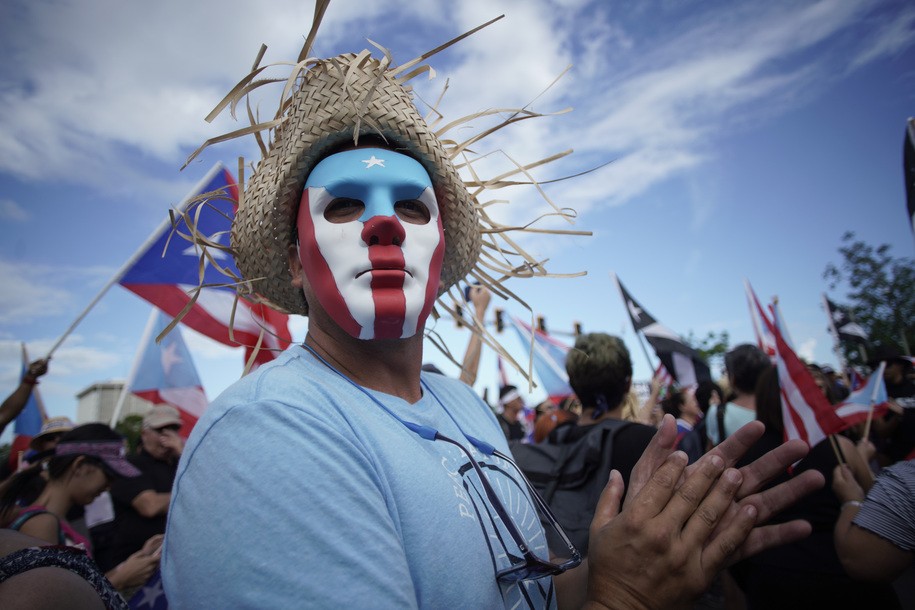
Some of these beaches are regarded as the most beautiful beaches in the world. These include Flamenco Bay, which is often in the top 10 beaches in the world list by TripAdvisor.
25. There was a Real Pirate of the Caribbean
The legendary Cofresí Pirate is Puerto Rico’s most famous real-life pirate, as the legend goes.
Cofresí was born in the seaside town of Cabo Rojo, and from a young age, he was encouraged by sailors in town to dream about exploring the sea.
According to folklore, Cofresí would attack boats and share his spoils with the poor, and as a result, people would help him hide from the authorities – sort of like Robin Hood.
Also, legend says that some of his treasures are still hidden in different parts of the island.
Oh, and Cofresí is loosely credited for inventing the precursor of the piña colada back in the 19th century.
He is known for offering his crew a cocktail made with coconuts, pineapple, and rum to boost their morale.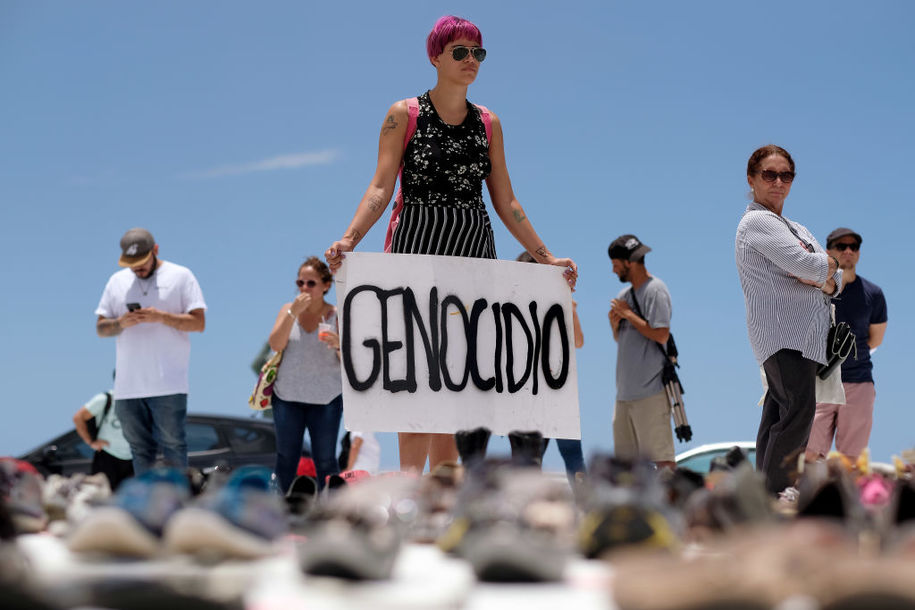 But, the recipe was lost after he died in 1825.
But, the recipe was lost after he died in 1825.
Speaking of rum…
26. The World’s Largest Rum Distillery is in Cataño, Puerto Rico
The famous Casa Bacardi is the largest rum distillery in the world. It produces more than 100,000 liters of rum every 24 hours, contributing nearly 85% of Bacardi’s total rum production. Distilleries in Mexico and India produce the other 15%.
Puerto Rico is the world’s only rum producer to maintain a minimum aging law for its rum. The three main categories of rum you can get are: light, dark, and añejo, or aged.
Don Q Rum and Bacardi are the largest producers of rum on the island, and its production goes back circa 400 years.
While Bacardi was established in 1862 in Cuba, it shifted its production to Puerto Rico in 1936 – a post-prohibition move that allowed Bacardi to sell its rum tariff-free in the United States.
You can visit the Bacardi Rum factory on a guided tour.
27. Coconuts are not Indigenous to Puerto Rico, or the Americas at all.
Coconuts are not Indigenous to Puerto Rico, or the Americas at all.
Those beautiful coconut palm trees on a Caribbean white sand beach are not indigenous to any American territory.
The coconut was introduced to Puerto Rico in 1542 when the Spanish imported it from the Far East.
Soon after, it became part of their diet, and centuries later, it became part of not only one of the most popular drinks on the island but its national drink too – the Piña Colada.
28. The Piña Colada was Invented in San Juan
I already told you about Cofresí’s precursor to the Piña Colada, but the “official” piña colada we know today was invented in 1954 by Ramón “Monchito” Marrero while working as a bartender at the Caribe Hilton. He settled on a recipe he said captured the true nature and essence of Puerto Rico.
On the other hand, the famous Barrachina restaurant in Old San Juan also claims that their bartender, Don Ramon Portas Mingot, invented the Piña Colada in 1963.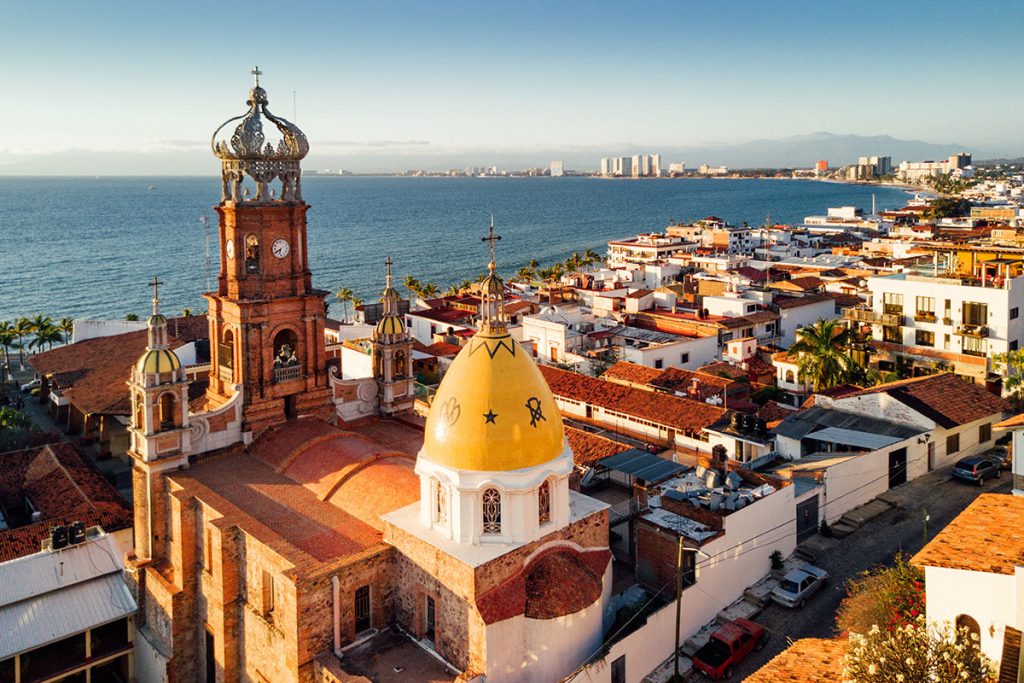
To try to settle the dispute, the governor of Puerto Rico recognized the hotel’s claim in 2004 to commemorate the drink’s 50th anniversary. Still, both locales continue to argue on who’s the real inventor.
The famous Flamenco Beach in Culebra, Puerto Rico, with its stranded WWII tank.
29. There’s a Lot of WWII History on the Islands
While WWII didn’t happen actively in Puerto Rico, the U.S. military fortified the island enough to protect it from any potential invasion and to serve as a training ground.
Vieques Island still hides several eerily abandoned bunkers you could visit on your own.
On Culebra Island, you’ll see the rusted military tanks left as a poignant memorial on Flamenco Beach. These tanks are now an icon of one of the most beautiful beaches in the world.
And last but not least, you’ll see WWII military-style modifications made to the historic El Morro Fort and San Cristobal Fort in Old San Juan.
30. Both the Imperial and Metric Systems are Used on the Island.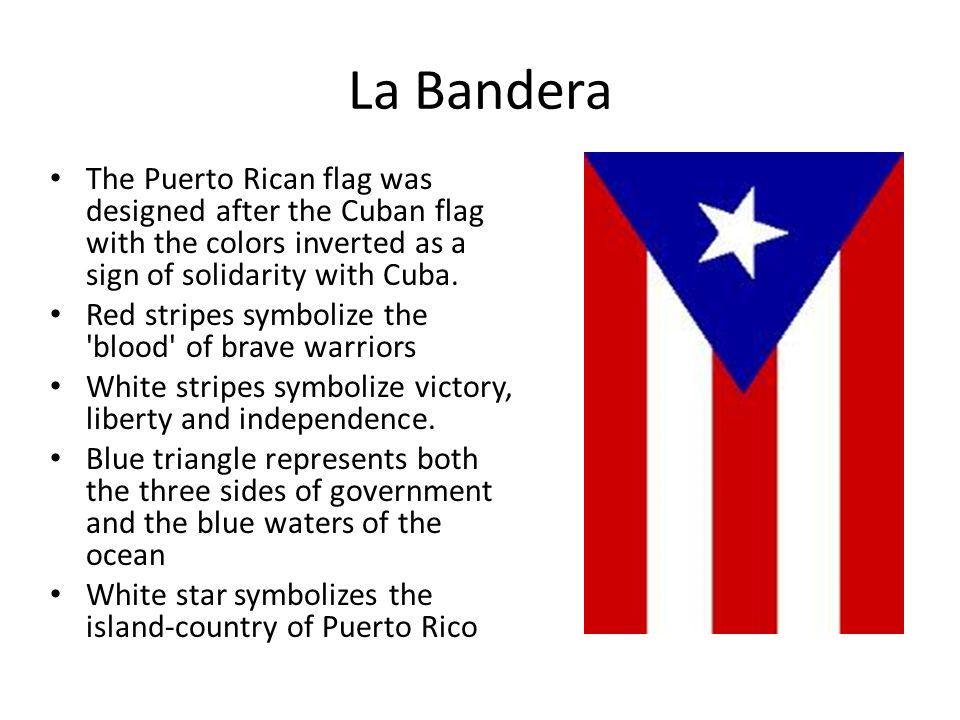
It can be confusing at first, but Puerto Rico still measures many things in metric, from its days as a Spanish colony, and also measures other things in Imperial, as the US does.
The US never eradicated the metric system from the island, so now it’s just a mess!
For example, when driving, distances are measured in kilometers, while speed is measured in miles per hour.
Land surveys are done in metric, while architectural drawings are measured in feet and inches.
Gas is sold in liters while milk is sold in gallons.
And cooking measures? They are all over the place!
31. Spanish and English are the official languages of Puerto Rico
This is another duality created by the switch of power between Spain and the US.
Spanish has been Puerto Rico’s official language since it was colonized in the 15th century.
On the other hand, English was first introduced as an official language by the end of the 19th century when the United States occupied the island during the Spanish–American War.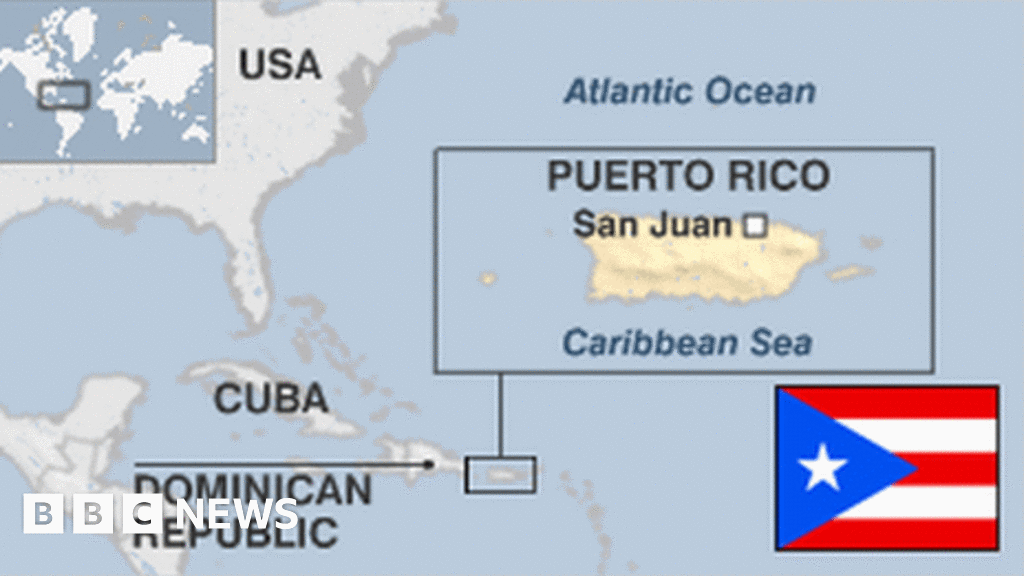
Even though English is an official language, Puerto Rico is overwhelmingly Spanish speaking. The US government has failed to establish English as the dominant language despite several efforts.
But, you’ll come across people who speak a mixture of both, also known as “Spanglish.”
32. The Puerto Rico Trench is the Deepest Point in the Atlantic Ocean
The Puerto Rico Trench is located on the northern side of Puerto Rico and extends from Cuba to the lesser Antilles. With a maximum depth of 27,480 ft (8,376 meters) or 5.20 miles, this trench constitutes the single deepest point in the Atlantic Ocean.
33. Puerto Rico Has the Tallest Statue in the Americas
Measuring 360 feet (110m), the statue called “Birth of the New World” holds the record for the tallest statue and sculpture in the Americas since its completion in 2016.
For comparison, it is more than twice as tall as the Statue of Liberty in New York City – which measures 151 feet (46m).
The controversial “Birth of the New World” statue, which has the image of Christopher Columbus and his ships, was originally designed to commemorate the 500th anniversary of Christopher Columbus’s first voyage to the new world.
While there was nowhere to build it on time for the commemoration, it found its home in Arecibo, Puerto Rico some 24 years later.
34. Puerto Rican Coffee is Among the Best in the World
The weather and soil conditions in Puerto Rico are excellent for growing quality coffee. The island has several coffee plantations and haciendas you can visit, with some of them dating back to the early 1800s.
Among the best Puerto Rican coffee you can find today are Alto Grande Premium Coffee, Cafe Yaucono, Volcanica Puerto Rico Coffee, and Cafe Rico, among others.
A few recommended Haciendas to visit are Hacienda Lealtad, Hacienda San Pedro, Hacienda Tres Picachos, and a few more. You can also do a combined day tour of visiting a hacienda and a stunning waterfall in San Lorenzo.
Which of these Puerto Rico facts surprised you?
Coqui, Arecibo, and Fortaleza photos from Flickr Creative Commons.
1.5K
shares
21 Fun and Interesting Facts about Puerto Rico
Quick, think about America’s greatest sites for tourists. You probably think about Disneyworld in Florida or the Grand Canyon. But Puerto Rico attracted four million tourists in 2020, generating nearly three billion dollars in revenue.
These facts about Puerto Rico may surprise you. Yet these two statistics are just the tip of the iceberg. There’s a lot you should learn about Puerto Rico before you plan a trip to the island territory of the United States.
Fun Facts About Puerto Rico
Table of Contents
Is Puerto Rico a state, and where did it come from? What are some of Puerto Rico’s best attractions, including food-related ones? What are some tips you should use to get around the island? Answer these questions and you can have a great Caribbean vacation in no time. Here are 21 facts you should know about Puerto Rico.
Here are 21 facts you should know about Puerto Rico.
Puerto Rico’s politics are awkward, to say the least. Puerto Rico is not a state, but a commonwealth within the United States. This means that American citizens can travel to the islands without a passport.
This also means that the federal government has jurisdiction over Puerto Rico. But Puerto Ricans do not have representatives in the Senate. They have a resident commissioner who represents them in the House of Representatives, but the commissioner cannot vote on bills.
Yet many international institutions treat Puerto Rico as its own country. Puerto Rico has a separate Olympic team from the American one, and they send their own contestants to the Miss Universe pageant.
2. Yet Puerto Ricans Are Americans
However, all Puerto Rican residents receive birthright citizenship. They have American passports, and they can travel to the American mainland as they please.
Unfortunately, Puerto Ricans do not have the same rights as other Americans.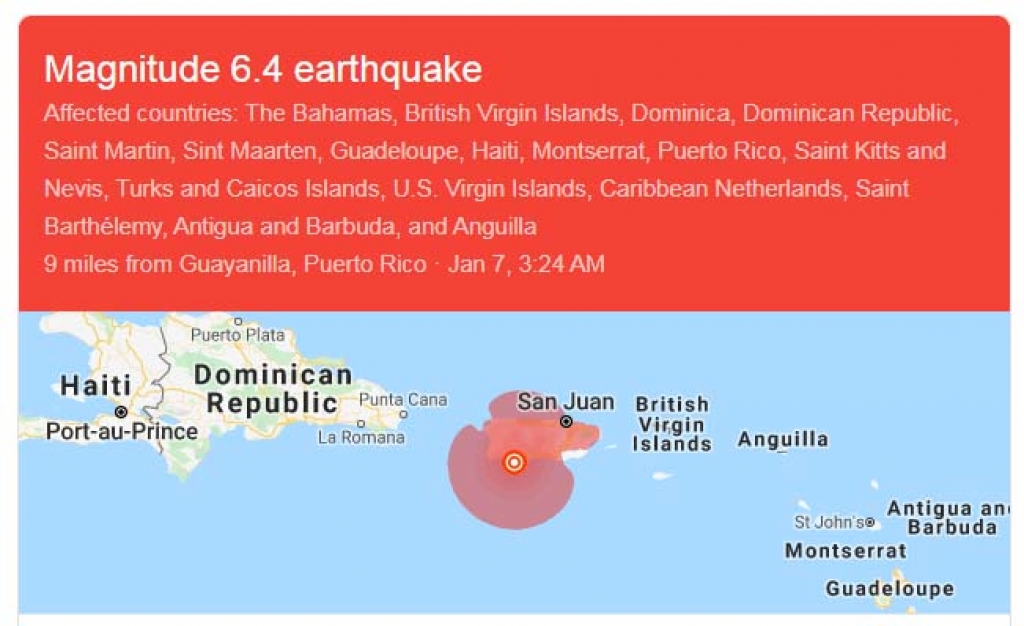 They cannot vote in presidential elections, though they can vote for party nominees.
They cannot vote in presidential elections, though they can vote for party nominees.
Oddly enough, you can receive a Certificate of Puerto Rican Citizenship and become a dual national of Puerto Rico and your home country. You must be born in Puerto Rico, have a Puerto Rican parent, or be an American who has lived in the commonwealth for a year.
3. Don’t Confuse the Island With the Archipelago
When people read the term, “Puerto Rico,” they usually think about one island. In reality, Puerto Rico is an archipelago of many islands.
The main island is called Puerto Rico, and it contains the capital of San Juan. Vieques is seven miles off the main island’s east coast. More than 8,000 people live on the island, and it contains dozens of beaches you can visit.
Culebra is nine miles north of Vieques and roughly 16 miles away from the main island. Roughly 1,800 people live in Culebra, but most of the island is undeveloped.
The remaining islands are all uninhabited.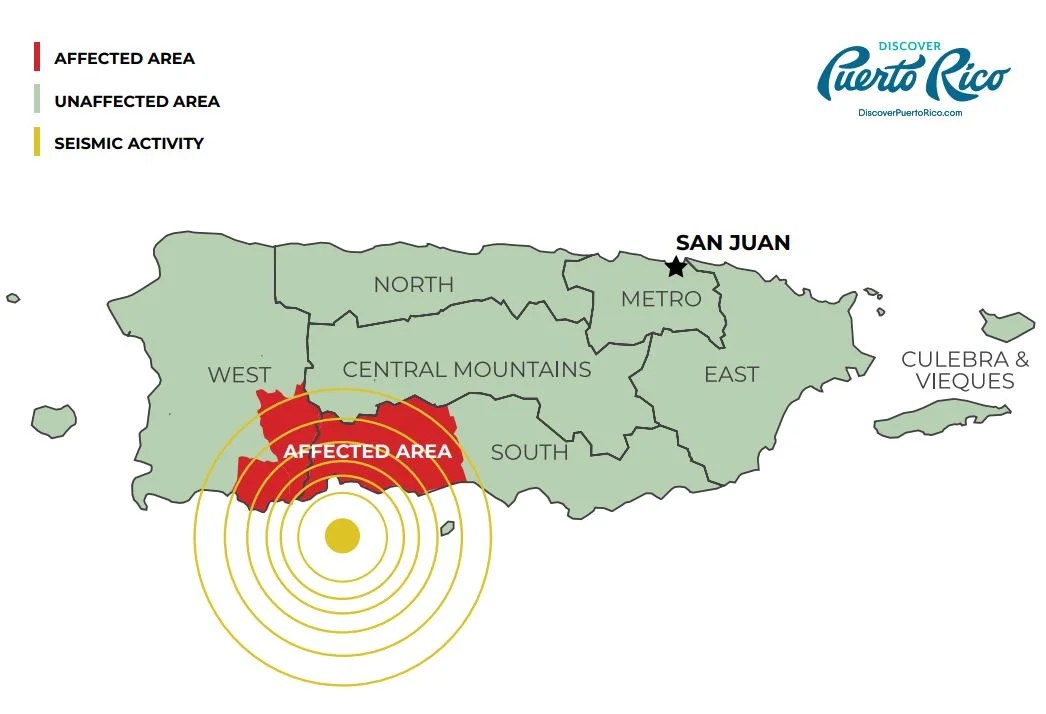 Some of them are nature preserves you may be able to visit on a boat.
Some of them are nature preserves you may be able to visit on a boat.
4. Puerto Rico Is the World’s Oldest Colony
Puerto Rico facts go way back in history. The Taino people inhabited the main island for thousands of years before Christopher Columbus arrived in 1493. He stayed on the island for just two days, yet he claimed it as a Spanish colony.
Spain then controlled Puerto Rico for just over 400 years. In 1898, Spain ceded Puerto Rico to the United States after the Spanish-American War. It has been under American control ever since, and some Puerto Ricans call the island a “colony” due to it not being a state.
5. World War II Is Everywhere
World War II may have been fought in Europe and Asia, but it left its mark on Puerto Rico. The American military was worried that the island would be invaded, so the government spent millions of dollars fortifying it.
It added modifications to historic forts so they were usable again. It also built bases and bunkers throughout the archipelago, including on Culebra.
When the war was over, the military left its equipment behind. You can find military tanks on Flamenco Beach on Culebra, and you can explore abandoned bunkers on Vieques.
Read any list of interesting facts about Puerto Rico, and you’ll read about El Yunque. It is the only tropical rainforest in America’s natural forest system. It’s 29,000 acres, making it one of the smallest forests in the United States.
Yet it is brimming with natural wonders and exotic wildlife. You can climb up mountains that are more than 3,000 feet tall, and you can watch parrots and frogs frolic.
7. You Can Walk Along 300 Miles of Beaches
Like any Caribbean paradise, Puerto Rico is most popular for its beaches. On the main island, Luquillo Beach is extremely popular. You can walk along white sand for miles and lounge underneath coconut palms.
If you’re looking to avoid the crowds, you should get away from the main island. Flamenco Beach on Culebra Island contains coral reefs that are perfect spots for snorkeling and diving. Vieques offers Sun Bay Beach, which has crystal blue water that is nice for swimming.
Vieques offers Sun Bay Beach, which has crystal blue water that is nice for swimming.
8. You Can Also Visit Bioluminescent Bays
Sun Bay Beach has another surprise for you. It contains Mosquito Bay, which is home to plankton that produce bioluminescent light at night. If you visit under the right conditions, you can see the water glowing blue after sundown.
You can also visit Fajardo Bioluminescent Bay on the mainland and La Parguera on Lajas, one of the outlying islands. You can swim and go boating in the water, but you should not pollute the water with chemicals or trash.
9. Puerto Rico Has America’s Largest Cave Network
The Cavernas del Río Camuy contains more than 200 caves that stretch over 250 miles. Only a small portion of the caves have mapped trails, but you can visit whenever you want. You can also go off the beaten path and go exploring, though you should go in a group so you avoid accidents.
The Birth of the New World is a depiction of Christopher Columbus at the helm of his ship.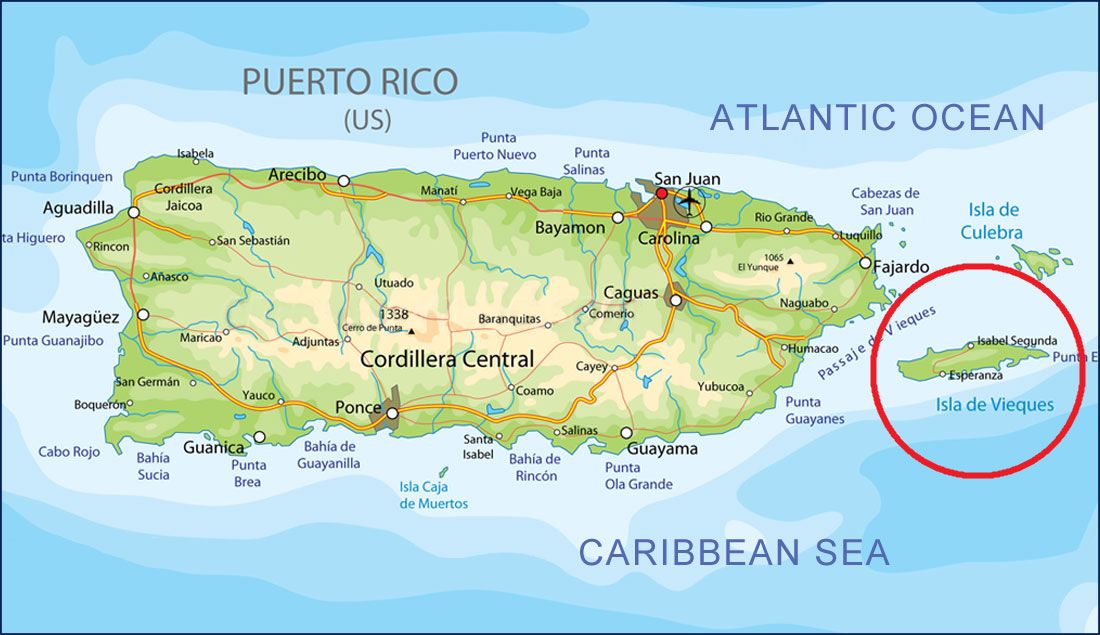 The statue is made of bronze and it is 360 feet tall, making it more than 200 feet taller than the Statue of Liberty.
The statue is made of bronze and it is 360 feet tall, making it more than 200 feet taller than the Statue of Liberty.
You can visit the statue in Arecibo. You can’t approach the statue, but the government of Arecibo is planning to open a park around it soon.
Plaza Las Américas stretches across 1.9 million square feet of space, and it contains more than 300 stores. You can find nearly all major retailers, including JCPenney, Macy’s, and Best Buy. If you want authentic Puerto Rican souvenirs, you can buy antiques, artworks, and license plates from stores throughout the mall.
12. La Fortaleza Is America’s Oldest Executive Mansion
In 1529, Governor of Puerto Rico Antonio de la Gama started writing letters to the Spanish emperor. The citizens of San Juan were feeling unsafe, and they needed fortifications to live in.
The emperor responded by financing the construction of a mansion in San Juan called La Fortaleza. Construction ended in 1540, yet the emperor had forgotten to give the soldiers at the mansion guns.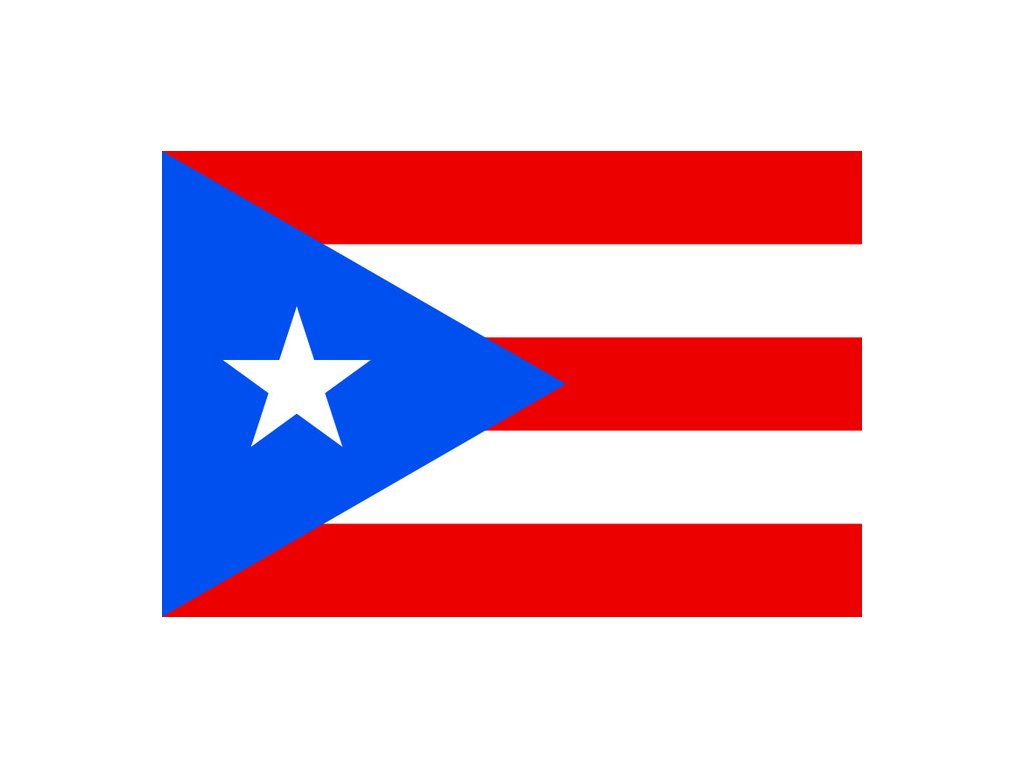 Rather than let the building go to waste, the governor moved into the fortress in 1544 and made it his own residence.
Rather than let the building go to waste, the governor moved into the fortress in 1544 and made it his own residence.
La Fortaleza has been in continuous use as the governor’s residence ever since. It is open to the public, and you can take a 30-minute tour of the grounds and gardens.
13. Old San Juan Is Different Than San Juan
Articles with fun facts about Puerto Rico like to discuss San Juan. They usually mention that San Juan was established in the 1520s, and that’s true.
However, not all of modern-day San Juan was inhabited. Old San Juan is a district of the city that contains the oldest buildings, including La Fortaleza. You can spend a day touring the district, visiting different shops and walking through castles.
14. San Juan Isn’t the Only Cultural Hub in Puerto Rico
San Juan is the capital, but it is far from the only urban center in Puerto Rico. Ponce is home to roughly 140,000 people. Many festivals take place in the city throughout the year, including the National Genip Festival in August.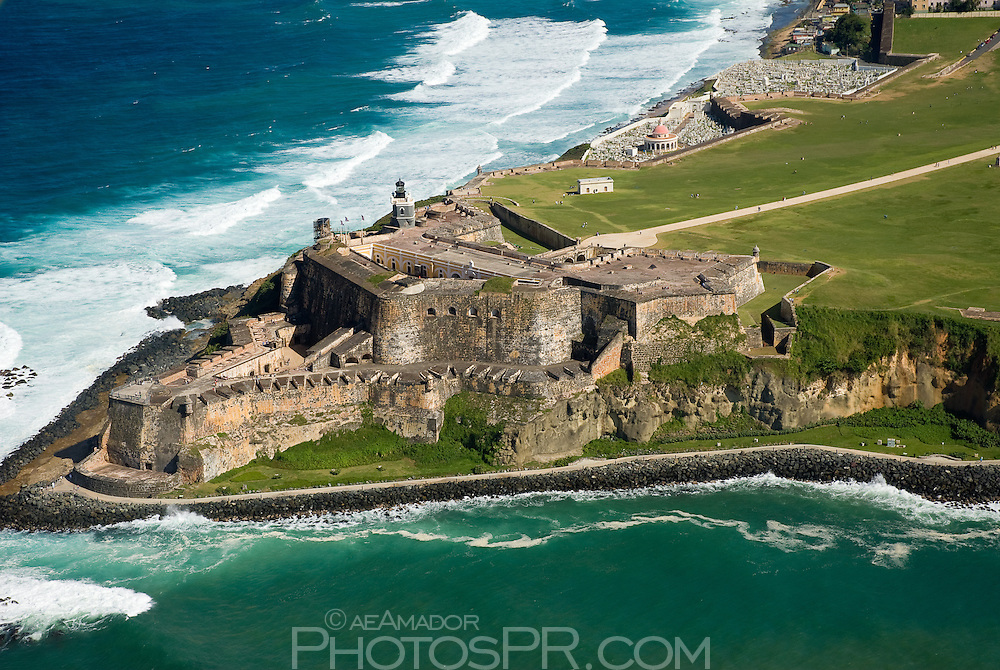
More than 120,000 people live in Caguas. The city contains numerous parks and natural areas you can visit, including the Bairoa River Natural Protected Area, which has a riparian forest.
15. Puerto Rican Food Is a Melting Pot
Ask a Puerto Rican resident what the national dish is, and they’ll tell you about arroz con gandules. The dish combines slow-cooked tomatoes, garlic, and onion with rice and pork. You can find numerous variations of the dish, with some chefs adding olives and plantain leaves to it.
Indeed, you can find variations for nearly all Puerto Rican dishes. You can eat pasteles with shellfish, raisins, or garbanzo beans. At kiosks, you can try codfish fritters, mozzarella sticks, and octopus salad.
16. You Can Enjoy Delicious Rum
The rum industry in Puerto Rico is valued at roughly $51 million. You can find microdistilleries in any major city, and many restaurants have a list of rums you can sample from.
You can also take tours through distilleries, including Bacardi’s distillery in Cataño.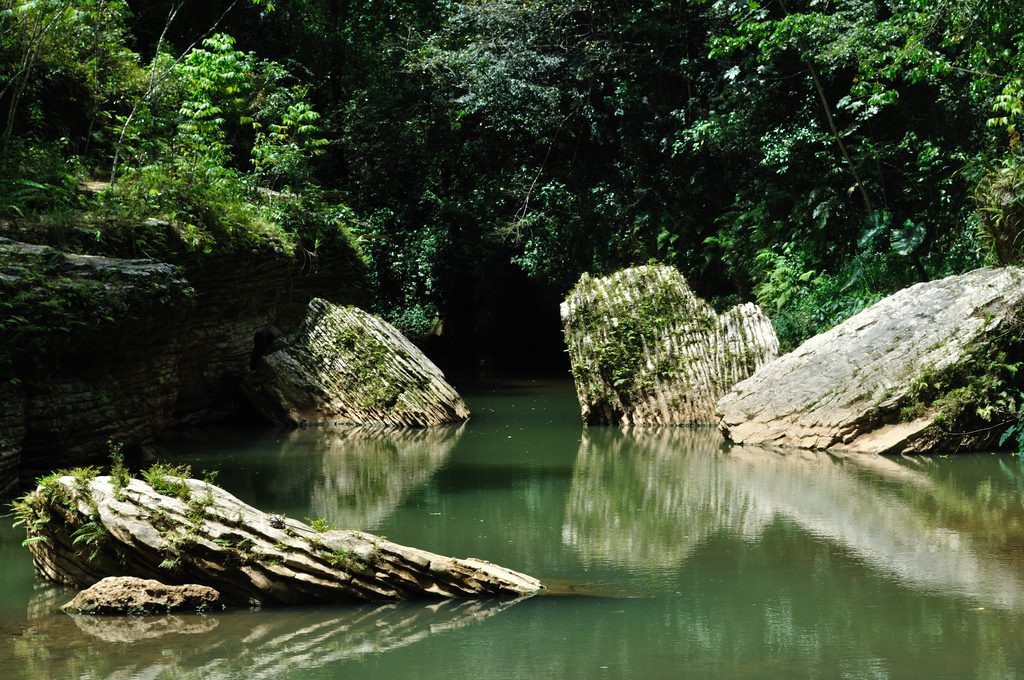 Some of the distilleries let you take mixology classes and tastings, though you may need to pay fees.
Some of the distilleries let you take mixology classes and tastings, though you may need to pay fees.
17. But Don’t Miss Out on the Coffee
Puerto Rican coffee may be the most underrated part of Puerto Rican cuisine. Coffee plantations are located throughout the main island, and you can visit cafes for breakfast or an afternoon coffee break.
Many residents like to drink espresso, which can be a little bitter and overpowering. If you want to cut down on the bitter flavor, you can order a cortadito, which combines espresso with steamed milk.
18. The Climate Is Incredible Year-Round
The weather in Puerto Rico is nice throughout the year. Average temperatures remain in the 80s for all 12 months, though temperatures can dip during the fall and winter.
Puerto Rico does have a wet season between May and November, with August seeing an average of 7.7 inches of rain. This season corresponds with the hurricane season, and you may encounter tropical storms if you visit the island during the summer.
19. Christmas Isn’t Just for December 25
Another reason to visit in the fall and winter is Christmas. Cities start to hang up their Christmas decorations in late October, and the festivities officially begin after Thanksgiving. You can go to church ceremonies, watch parades, and cook elaborate meals with your loved ones.
The festivities don’t end on Christmas Day. They continue until the San Sebastián Street Festival in late January. The occasion is an elaborate street festival in San Juan, and you can enjoy live music and watch dancers perform.
20. Islanders Use the Imperial and Metric Systems
One of the most common mistakes amongst first-time travelers is mixing up the imperial and metric systems. Road signs describe distances using kilometers, and gas is sold in liters. However, speed is measured with miles per hour, and drawings will list measurements with feet and inches.
Make sure you know the basics of the metric system before you head out.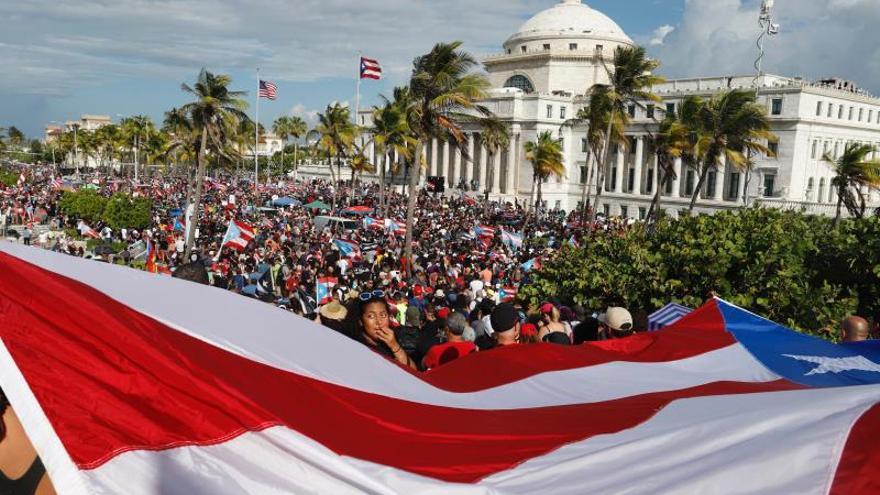 You may want to download a conversion app on your phone so you can do quick calculations. Hey, that’s pretty similar to Canada, check out these 72 Funny And Interesting Facts About Canada
You may want to download a conversion app on your phone so you can do quick calculations. Hey, that’s pretty similar to Canada, check out these 72 Funny And Interesting Facts About Canada
21. Islanders Speak Spanish and English
Puerto Rico has two official languages, Spanish and English. Puerto Ricans often greet each other in Spanish, and they may have quick conversations in the language. If they go more in-depth, they may transition to English.
You should be familiar with basic Spanish phrases so you can greet natives and follow travel safety tips. But feel free to use English if you find pronunciation rules in Spanish difficult.
Interesting facts about Puerto Rico
These Facts about Puerto Rico might have surprised you. It has a long history of colonization, and it remains an American commonwealth, not a state. But Puerto Rican culture is extremely vibrant. The islands have numerous natural wonders, including pristine beaches and bioluminescent bays.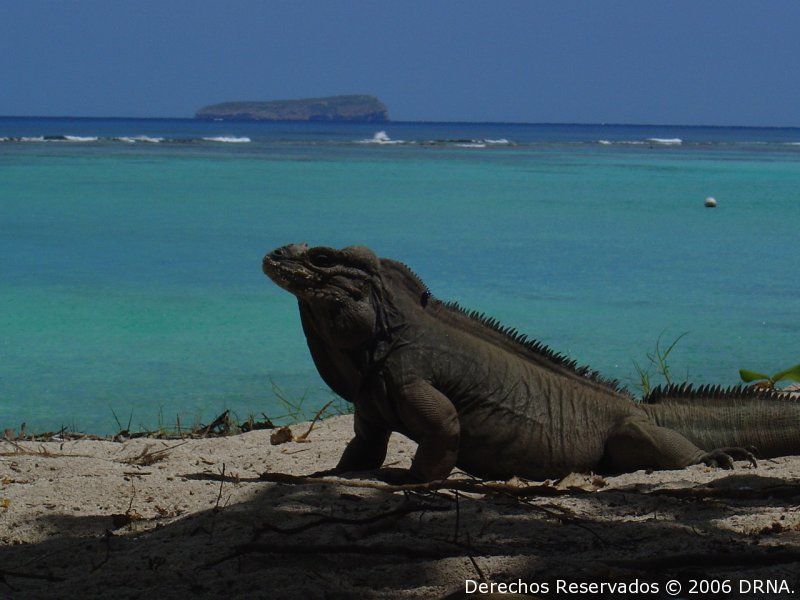 You can also sample a rich cuisine and drink delicious rums and coffees.
You can also sample a rich cuisine and drink delicious rums and coffees.
Try visiting the islands during the Christmas season. Make sure you know the metric system and Spanish before your trip. Okay, maybe you don’t need to know the metric system, but it’s fun to try! Join the rest of the world and use km instead of miles.
Anyone can enjoy Puerto Rico, once they have the facts. The Planet D provides informative travel guides. Read our guide to Puerto Rico.
77 Interesting Facts About Puerto Rico » Another Life
Puerto Rico, officially the Commonwealth of Puerto Rico, is a non-aligned territory in the United States located in the northeast Caribbean Sea. Its area is 9104 sq. Km. Its capital and largest city is San Juan. Spanish and English are his official languages. Its official currency is the United States dollar (USD). It has no land bordering countries. It is an archipelago consisting of the main island of Puerto Rico and a number of smaller islands. From these 77 interesting facts about Puerto Rico let’s learn about its history, culture, human beaches, wildlife, trade, economy, caves, food, flag and more.
1. The name Puerto Rico (rich port) comes from the large amount of gold that the first Spanish settlers found on the island.
2. Slaves were imported from Africa to raise cattle, sugarcane, coffee and tobacco on the island.
3. Two-thirds of the island was a US naval base for almost 60 years. The Navy actively used the area for bombing and military training. However, after an accidental death of a civilian, the area was abandoned as a Navy base and eventually became a nature reserve.
4. Puerto Rico was one of the last two Spanish colonies in the New World (the other being Cuba).
5. Columbus Discovered Puerto Rico was first discovered by Christopher Columbus in 1493 and several invasion attempts were made by the French, Dutch and British. During his journey, he stayed on the island for two days.
6. Before opening. It is noteworthy that Christopher Columbus discovered America in 1492, a year before the discovery of Puerto Rico. Before his arrival, the Taino Indians lived in the archipelago, who called him “Borinken”.
7. Christopher Columbus named the island “San Juan Bautista” in honor of Saint John the Baptist.
8. Do you know that when the US planned to buy Puerto Rico for $160,000,000? However, Spain refused (Puerto Rico was under the Spanish agreement at the time).
9. During the Spanish-American War, the United States acquired Puerto Rico, Guam and the Philippines under the Treaty of Paris. The cost of the treaty for the United States was $20,000,000.
10. The population of the country increased from 155,428 in 1800 to almost one million in 19- m century.
11. Name change: The name of the island was changed by the US to “Porto Rico” in 1898, but it was changed back to “Puerto Rico” in 1931.
12. Barceloneta in Puerto Rico has the largest pharmaceutical complex in the world (14 branches). I wonder why? The water in Barceloneta is so pure that it requires minimal treatment to produce pharmaceutical products.
13. Barceloneta is also known as the “city of pineapples” because of the large pineapple plantations.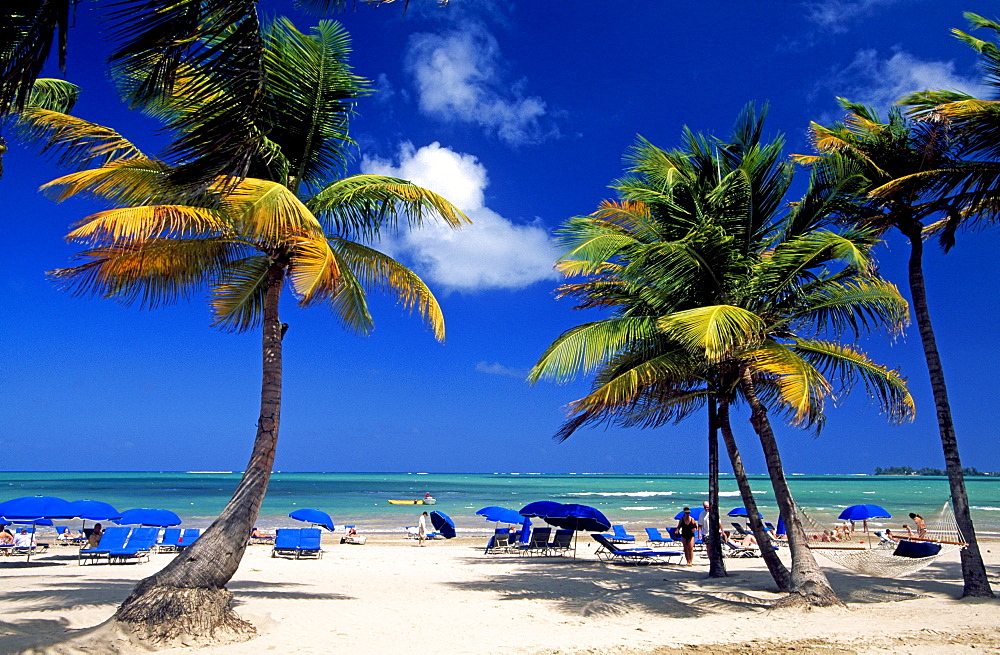
14. If you want to visit the island, be aware that Barceloneta is famous for its blue sand beaches.
15. Giant Telescope: Puerto Rico is also home to the largest single aperture telescope ever built, the Arecibo Observatory. It consists of 40,000 aluminum panels, each measuring three feet by six. The telescope has been featured in several Hollywood films including GoldenEye, a popular entry in the James Bond film series.
16. Attractions – Cave system: The river gives rise to a beautiful and wonderful cave system known all over the world – Kamui. The system includes over 10 miles of caves, 220 caves and 17 entrances. Experts believe that another 800 caves remain to be explored. Today, a 268-acre park has been built around the cave system, allowing tourists to experience some of the best natural areas in the country.
17. Unique Frog: The Coqui Island frog is found only in Puerto Rico. It produces an expressive high-pitched sound – “ko-ki, ko-ki” – especially at night.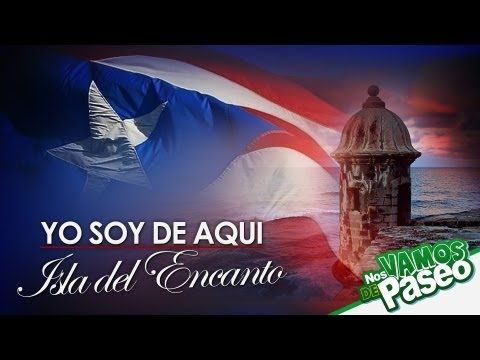 The frog is also the unofficial national symbol of the country. Unfortunately, this species is now endangered.
The frog is also the unofficial national symbol of the country. Unfortunately, this species is now endangered.
18. A forest without snakes and bears: Puerto Rico also has the only tropical forest in the US forest system, El Yunque. And you may be surprised to know that in this forum forest there are snakes, bears and dangerous animals!
19. barking dog. Interestingly, Puerto Rico lacks any natural land mammals. Modern mammals, including horses, cattle, cats and dogs, have been introduced to the island from elsewhere. There was once a hairless dog on the island, but today it is extinct.
20. Holiday shoppers beware: Plaza Las Americas in San Juan is one of the largest malls per square foot in the world.
21. The Bacardi Rum Distillery (founded in 1862) in San Juan is the largest rum distillery in the world (producing over 100,000 liters of rum every 24 hours). The distillery accounts for about 85% of Bacardi’s total rum production, with the rest produced in factories in Mexico and India.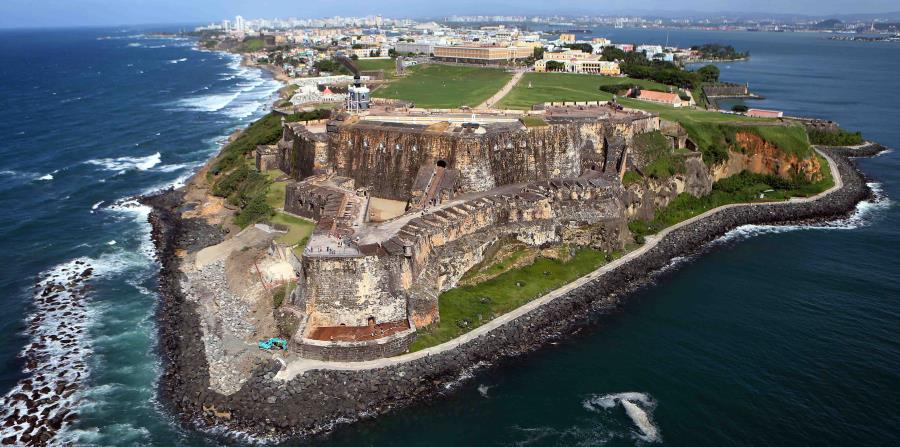
22. Paradise for visitors. An estimated five million people visit Puerto Rico’s capital, San Juan, every year.
23. Almost a country: many consider Puerto Rico a country; however, the fact is that it is not a country in itself. This is US territory.
24. Puerto Rico does not observe daylight saving time.
25. Tax incentives and cuisine. Puerto Rico is a popular destination for tourists from all over the world due to its attractive tax incentives and traditional cuisine.
26. Many of the national holidays that Puerto Ricans celebrate, many are held on Mondays so that citizens can have a long weekend. Reasonable enough, isn’t it!
27. San Juan is also described as one of the world’s busiest ports for cruise ships.
28. Arroz con Gandules, the national dish of Puerto Rico, is commonly eaten by its inhabitants during every festival and holiday.
29. Spanish influence: the island was ruled by the Spaniards for almost 400 years.
30. Puerto Rico mostly speaks Spanish. The US government has failed to make English the dominant language despite several efforts.
31. Citizenship: Juan Marie Brass was the first person to receive Puerto Rican citizenship. He received a citizenship certificate from the Puerto Rico State Department on October 25, 2006. Since then, the government has granted Puerto Rican citizenship to people born in Puerto Rico and those with at least one parent who was born in Puerto Rico, and also those who have lived in Puerto Rico for at least one year and are a US citizen.
32. This is the most insular territory in the United States.
33. Voting Puerto Rico does not have the right to vote in the US Congress. They can’t even vote for the President or Vice President of the United States.
34. It is also called “the land of the Brave Lord.”
35. San Juan is the most populous city in Puerto Rico.
36. English but not advanced: Nearly 90% of Puerto Rico’s population cannot speak English at a high level.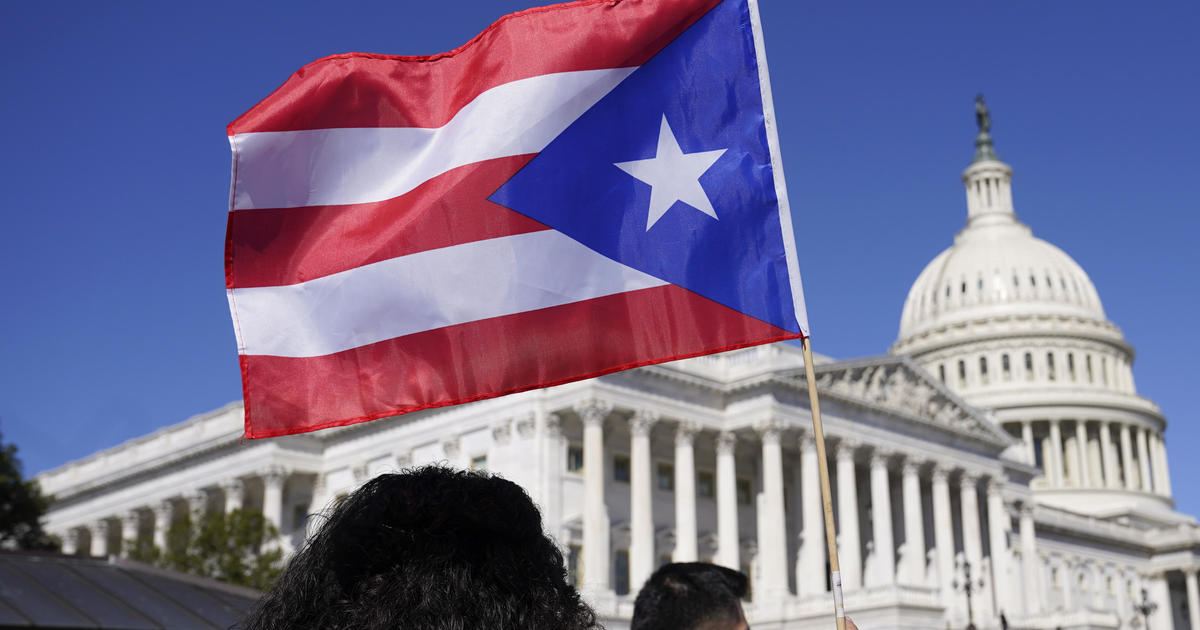
37. Puerto Ricans do not pay income tax.
38. The President of the United States of America is the head of state of Puerto Rico. It is a commonwealth associated with the United States.
39. If you are a US citizen visiting Puerto Rico, please be aware that you do not need a visa. However, those outside the US must comply with the requirements for entering the US.
40. Over the years, Puerto Rico has produced five Miss Universe winners.
41. Food in Puerto Rico is inexpensive. So if you are looking for a place where you can eat well within your budget and have a good time, Puerto Rico is a good choice.
42. Beautiful streets: The streets in the village look amazing! They are paved with blue stone, which gives them a stunning look.
43. In 2013, the cost of operating an air conditioner in Puerto Rico was three times higher than in New York.
44. Puerto Rico is famous for three things – rum, Ricky Martin and the recession.
45. Puerto Rico and rum have been associated for over 400 years. The country produces one of the best rums in the world. The US imports over 70% of the country’s rum goods, from Puerto Rico. They produce three varieties of rum: light, dark and añejo, or aged.
Puerto Rico and rum have been associated for over 400 years. The country produces one of the best rums in the world. The US imports over 70% of the country’s rum goods, from Puerto Rico. They produce three varieties of rum: light, dark and añejo, or aged.
46. The flag of Puerto Rico and Cuba are the same, but the colors of the stripes and the triangle are reversed.
47. Puerto Rico motto: “Puerto Rico does it better.”
48. The Rio Camui, the third largest underground river in the world, is located in Puerto Rico.
49. Puerto Rico is officially a multilingual country; as well as other countries such as India, Canada, Belarus, Cyprus, Madagascar, New Zealand, South Africa and Switzerland.
50. Currency: The official currency of Puerto Ricans is the United States dollar; however, they call it “peso” or “dollar”.
51. Economics. Tourism, manufacturing, pharmaceuticals, and technology play an important role in Puerto Rico’s economy.
52. Trade The United States, the Dominican Republic and the United Kingdom are Puerto Rico’s main trading partners.
Trade The United States, the Dominican Republic and the United Kingdom are Puerto Rico’s main trading partners.
53. The best time to visit Puerto Rico is from December to April.
54. Castillo San Cristobal is one of the most important attractions in Puerto Rico.
55. Beaches Puerto Rico is known for its beautiful beaches that can be found all over the island.
56. Ponce, also known as La Perla del Sur (“Pearl of the South”), is the second most populous city in Puerto Rico.
57. Coffee lovers, take note: Puerto Rico is a coffee lover’s paradise. Here you can taste the best coffee in the world. With over 10,000 coffee farms, Puerto Rico coffee is definitely worthy of your attention!
58. Puerto Ricans are proud to say, “I’m Puerto Rican, like coca.” See the fact no. 17 and you’ll find out why.
59. Puerto Rico is the easternmost and smallest island in the Greater Antilles group.
60. If you want to see a large breeding ground for wild animals, head to the uninhabited island of Mona.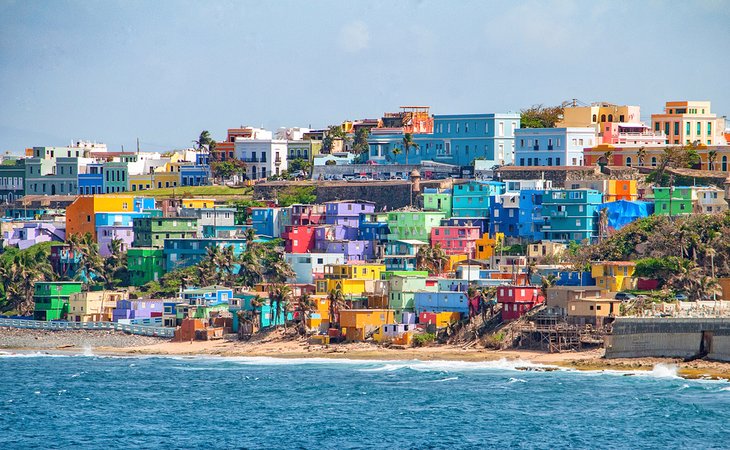
61. The Rio de la Plata is the longest river on the island. It runs 74 km from Kai Island in Dorado and flows into the Atlantic Ocean.
62. Puerto Ricans imported the mongoose from India to control the reptile population in the cane fields.
63. In Puerto Rico, temperatures range from 70 to 80 degrees Fahrenheit throughout the year.
64. Bird, flower, tree: note: Puerto Rico’s national bird: Reina Mora; National flower: Flor de Maga; National Tree: Ceiba.
65. Puerto Rico has been a destination for immigrants from various countries, including Italy, France, Germany, Cuba, Lebanon, Scotland, Ireland, the Dominican Republic and others.
66. Immigration from these different countries provides Puerto Rico with a rich culture.
67. In Puerto Rico, standing next to someone while talking and kissing them on the cheeks is considered a sign of respect.
68. The grill is widely used in Puerto Rican architecture as it provides protection from criminal activity. Since the 1950s, high-rise condominiums have become the best housing option, in contrast to the individual and community housing that prevailed in the country until the modern period.
Since the 1950s, high-rise condominiums have become the best housing option, in contrast to the individual and community housing that prevailed in the country until the modern period.
69. Puerto Ricans prefer local food, although they also like fast food.
70. Puerto Ricans prefer a good family life and money education. However, goods such as cars, gadgets, and clothing make people different.
71. Please note that Puerto Rico competes individually in the Olympics and as of this writing they have won six medals in the Olympics. Athletes from the region participate in competitions including tennis, wrestling, volleyball, boxing, swimming, triathlon and table tennis.
72. According to ifitweremyhome.com, if Puerto Rico were your home rather than the United States, you’d be 2.2 times more likely to be unemployed and use 56% less electricity.
73. Also, if Puerto Rico was your home and not from France, you would be 22.1 times more likely to be killed.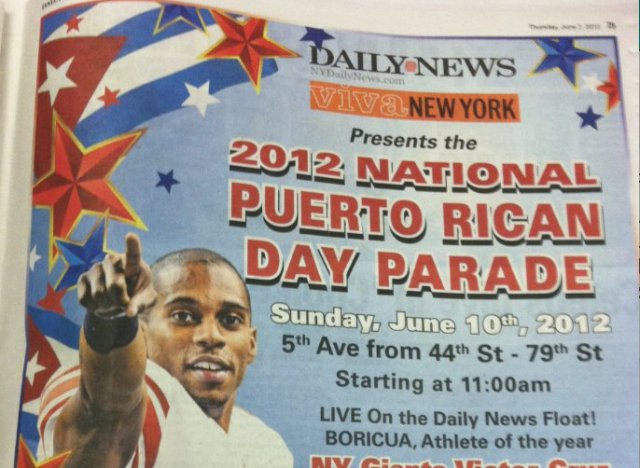
74. Puerto Rico is slightly smaller than three times the size of Rhode Island.
75. Cockfighting is a legal and popular sport in Puerto Rico. In most cities in Puerto Rico, you can find stadiums built for cockfights.
76. Puerto Rico is also home to the world’s largest reptile, the leatherback sea turtle. You can see these endangered reptiles on the islands of Vieques and Culebra.
77. In 2016, more than 80% of Puerto Rico’s population used the Internet. 15 interesting facts about Puerto Rico for tourists during the COVID-19 pandemic. True, upon arrival you will have to go through a 14-day quarantine, so it makes no sense to come here for a short time – only a long vacation. During the quarantine, you will certainly have time to acclimatize and get used to the country’s rules.
Puerto Rico was discovered by Admiral Christopher Columbus. Later, the island was colonized and for four centuries it was under Spanish rule.
The “radical revolution” of 1511 began in one of the cities of Puerto Rico – Aguada.
The statue of Juan Ponce de León, which is located in San José Square in Old San Juan, was made from copper after melting down all the weapons that were seized from the British who tried to invade Puerto Rico in 1797.
Arroyo was the first place in the world where the telegraph was installed. It was here, in 1858, that the inventor of the telegraph, Samuel Morse, established a private line from Hacienda, where his daughter Susan lived, to warehouses in the port of Arroyo, where his son-in-law, the Danish merchant Edward, worked.
In the 19th century, Aguadilla became a refuge for German, French, Italian and Spanish families after the independence of Haiti.
In September 1898, the island’s second military governor, Guy W. Henry, appointed Colonel Frank Techner to organize the body we know today as the Puerto Rico Police.
Adjuntas coffee and Yauko coffee are considered among the best in the world. Puerto Rico is also the country with the largest number of coffee-themed books published.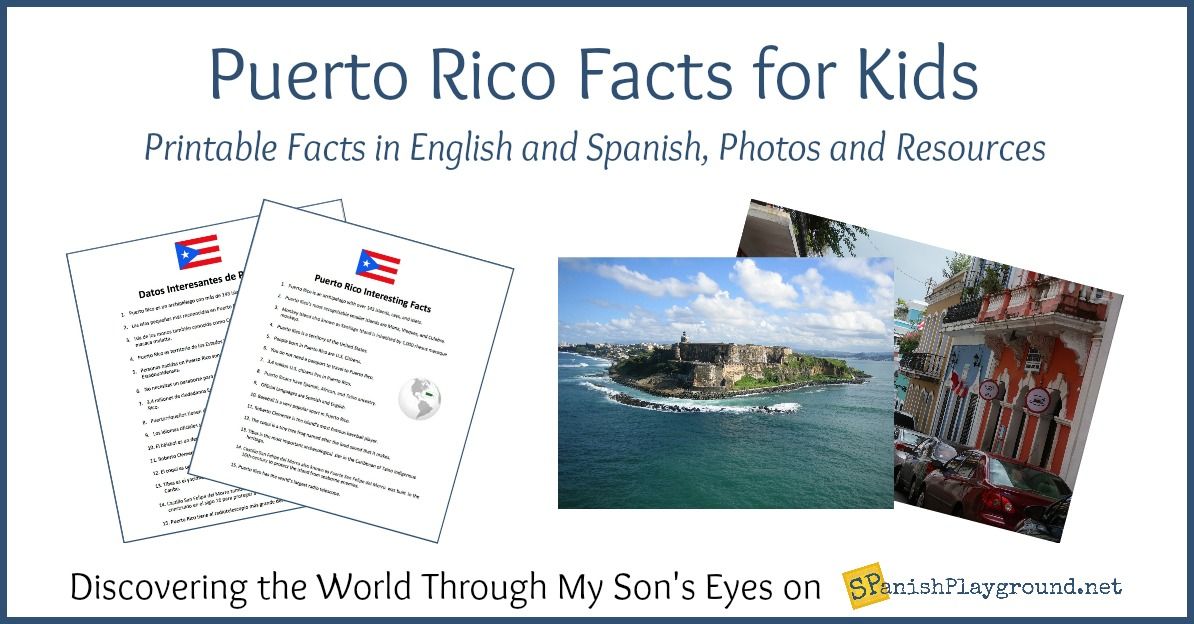
The only native mammal left in Puerto Rico that has not died out is the bat.
Puerto Rico is also known as the “Land of Rivers”. Despite its small territory, it has more than 1,300 rivers, streams and watering holes.
The Old Kindergarten of Old San Juan is said to have a child’s head in a niche. We are talking about the child martyr Saint Mariano, who was presented to a small school by Pope Pius VII.
The ceiling beams in the houses of Old San Juan are made of ausubo wood, immune to moths and weather. They can serve from five to seven centuries!
The world’s fastest bubonic plague epidemic was recorded in Puerto Rico. Health authorities overcame it in 92 days: a world record. This was in 1912.
The city of San Juan was the most protected place in the Caribbean, which English, French and Dutch corsairs could not conquer with weapons.
The Fiestas Patronales in Puerto Rico is a festival that takes place in different cities of the island every year from January to December. They are held in honor of the patron saints of each municipality. In cities, the main square usually serves as a place for celebration. Although they have religious roots, patron saint festivals feature various activities that reflect other aspects of the culture. During the respective holidays, you can enjoy parades, games, cars, typical gastronomy and live music shows.
They are held in honor of the patron saints of each municipality. In cities, the main square usually serves as a place for celebration. Although they have religious roots, patron saint festivals feature various activities that reflect other aspects of the culture. During the respective holidays, you can enjoy parades, games, cars, typical gastronomy and live music shows.
Creativity and color abound at the festival of masks, which takes place on December 28 in the city of Hatillo. This traditional celebration consists of performances of masked people who come out early in the morning in colorful handmade costumes and walk through the main streets. At the end of the tour, participants and spectators arrive in the city center of the city to continue the party there.
This holiday is inspired by the story of the persecution of children by order of the king, and the masks represent the soldiers who were called. That is why its celebration takes place close to April Fools’ Day.